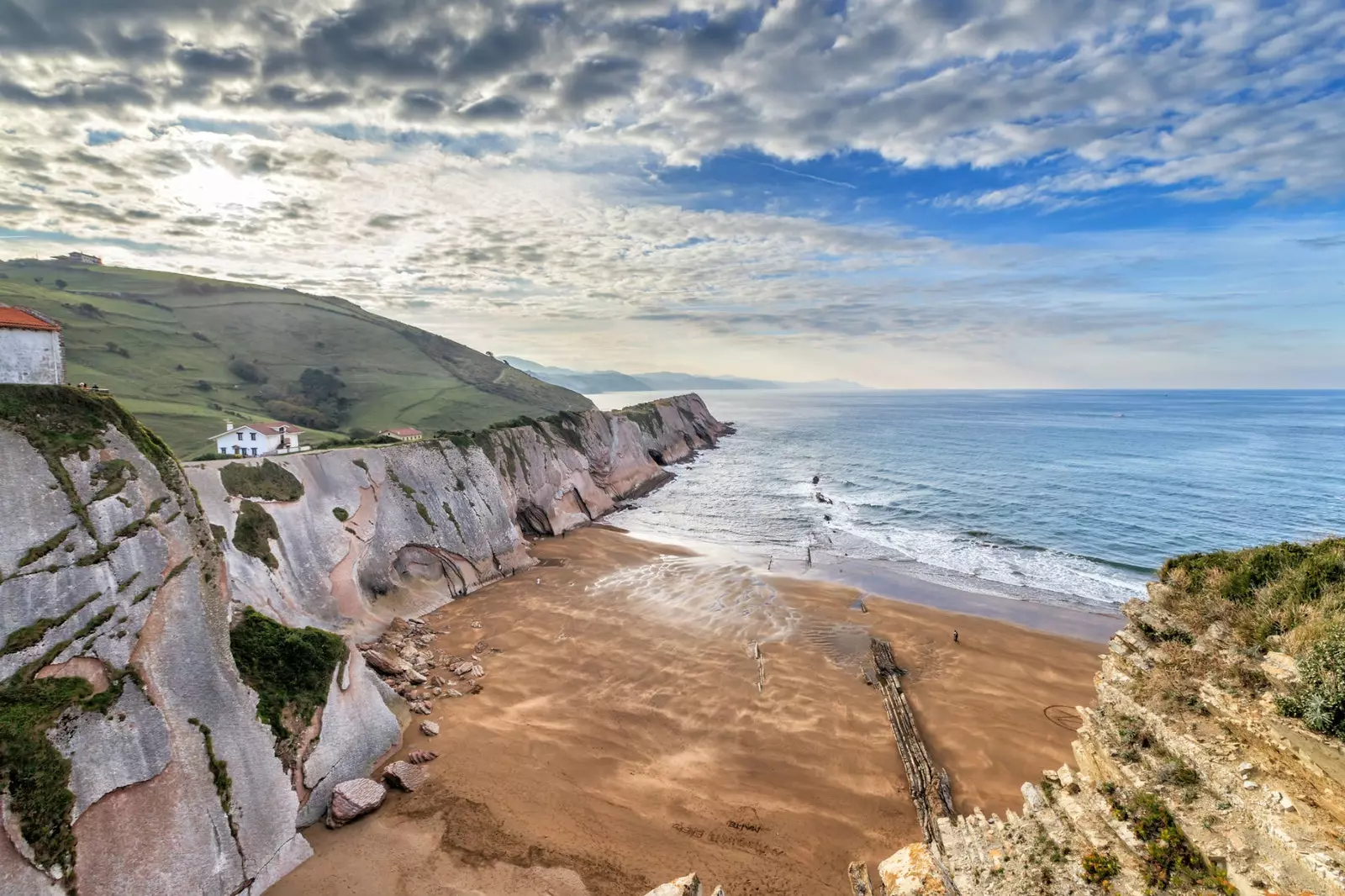
Zumaia, the perfect Basque fishing village.
We are going to give you many reasons to escape right now to the Basque Country . Just by stepping on this land you will notice that your body loses its rush, that puts aside the clocks and opens to know another lifestyle, more from you to you.
You will stay for its landscapes , those green mountains in which white houses and mighty rivers suddenly appear as if they were painted; you will stay too for a luxury gastronomy , for its pintxos and that way of sharing a beer or a glass of wine in the street chatting relaxed; and surely and definitely, its people will be the ones that end up conquering your traveling heart.
We headed to the coast Guipuzcoa to check. In the Basque Coast Geopark are its three main municipalities: Mutriku, Deba and Zumaia . We stayed in the last of them, ** Zumaia , a town of contrasts **, whichever way you look at it will always surprise you.
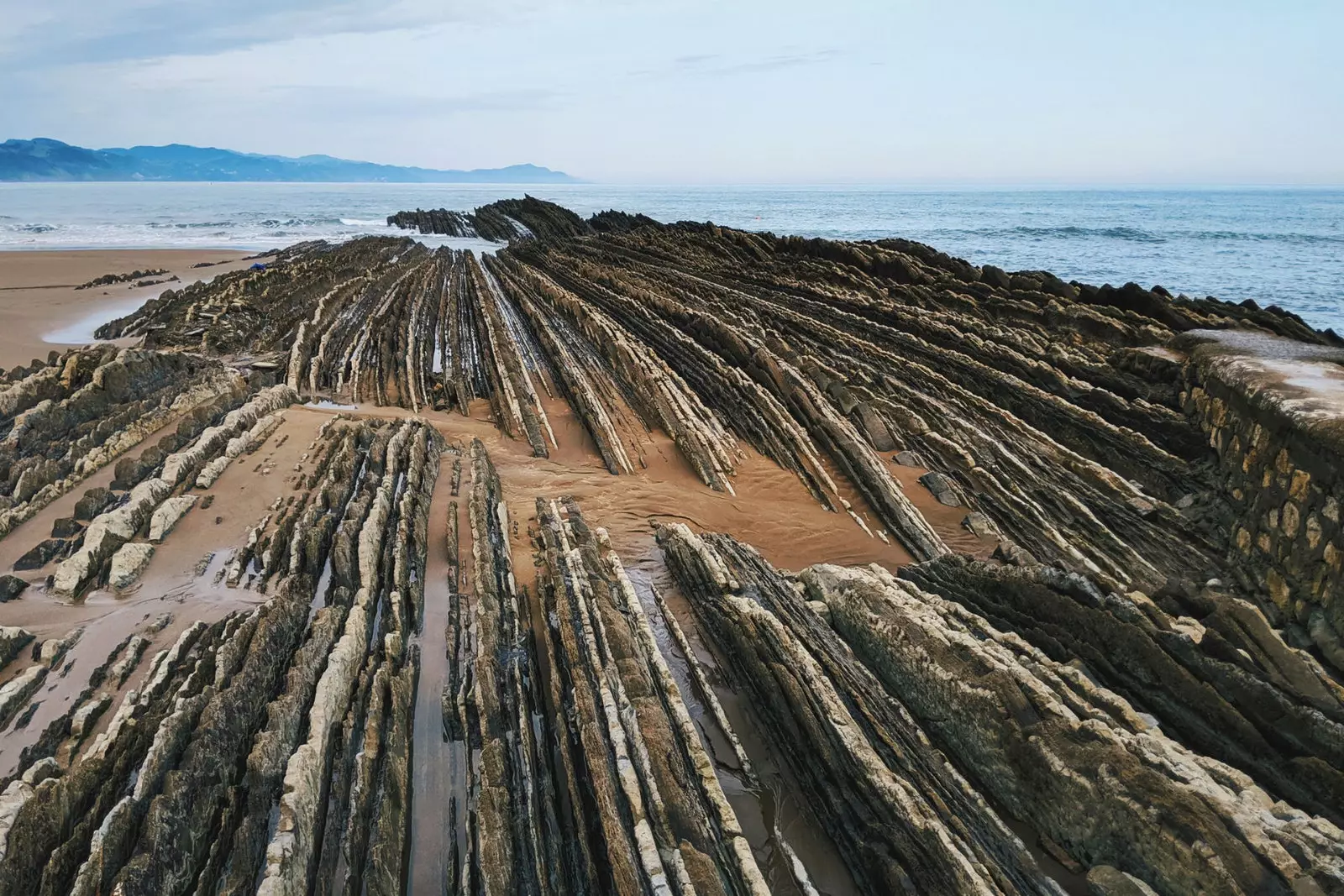
The flysch, an open book with more than 60 million years.
Until here you will arrive attracted by its cliffs, which keep a geological secret called flysch . This phenomenon, which develops along 8 km of coastline, is as if it were a great open book in which we can learn 60 billion years of the history of the earth including the great extinction of the dinosaurs.
Hence it was declared in 2015, UNESCO World Heritage . What your eyes will see will be some erosions in the mountains that extend until they reach the sea. These flysch layers were formed by decantation of sediment and small shells of marine organisms. at the bottom of the sea.
How was it formed? Let's say that the Iberian Peninsula, more than 100 billion years ago, separated from Europe; from that separation was born the Bay of Biscay and, on whose seabed, a flysch black that we can see today in Deba and Mutriku. Later it would be formed Zumaia.
When the Iberian Peninsula collided with Europe (more than 33 billion years ago) the sediments of the seabed were deformed, rising and creating the Pyrenees and the vertical layers of the flysch. Finally, the cliffs emerged from which we can see this magical landscape today.
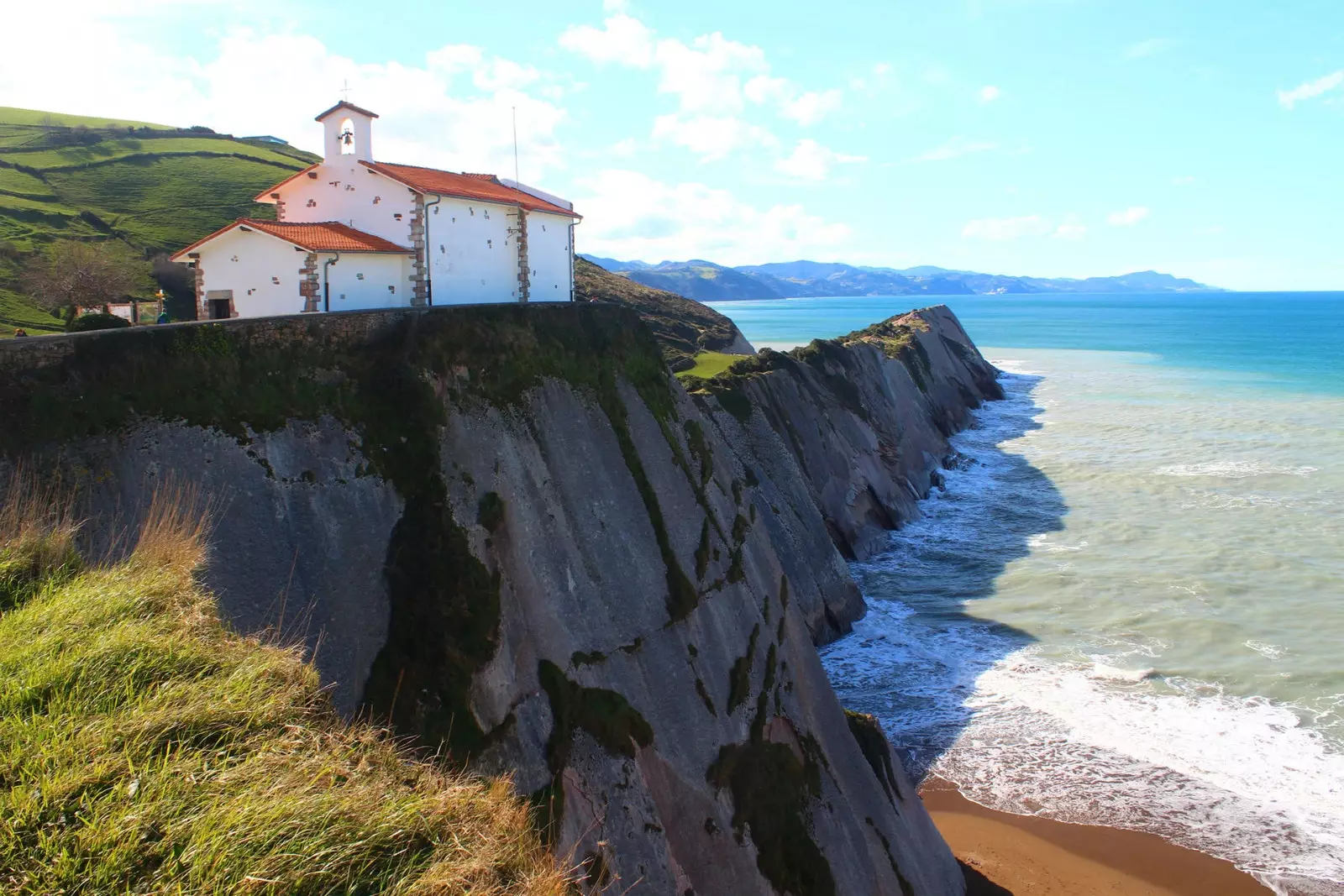
Hermitage of San Telmo in Zumaia.
To contemplate it there are different points of view . First we can do it from the top of the viewpoint where we will see the Algori beach , small and rocky, but magical because when the tide goes out it reveals the effects of the flysch in its splendor.
On the other side and a few meters away, the Itzurun beach , open to the sea and with the best views of the natural strata. They say that its sand (much darker) and its waters they have beneficial properties for health due to their high concentration of iodine.
Any time is a good time to visit it, it is always beautiful, but it is advisable to be aware of the sea because when the tide recedes from the base of the cliff, a wide abrasion platform appears. Quite a show. If you like photography, this place will certainly not disappoint you.
Don't be in a hurry, sit down and enjoy the scenery, there are several viewpoints and benches to sit on. At your feet will follow a path on the way to the Hermitage of San Telmo, patron saint of navigators . This hermitage stands on the cliff that guards the Itzurun beach.
The earliest reference to her is in 1540 It is normally closed but inside it houses a Rococo altarpiece from the 18th century. Enjoy a short but wonderful path that starts from it.
You can follow the route through the Geopark here.
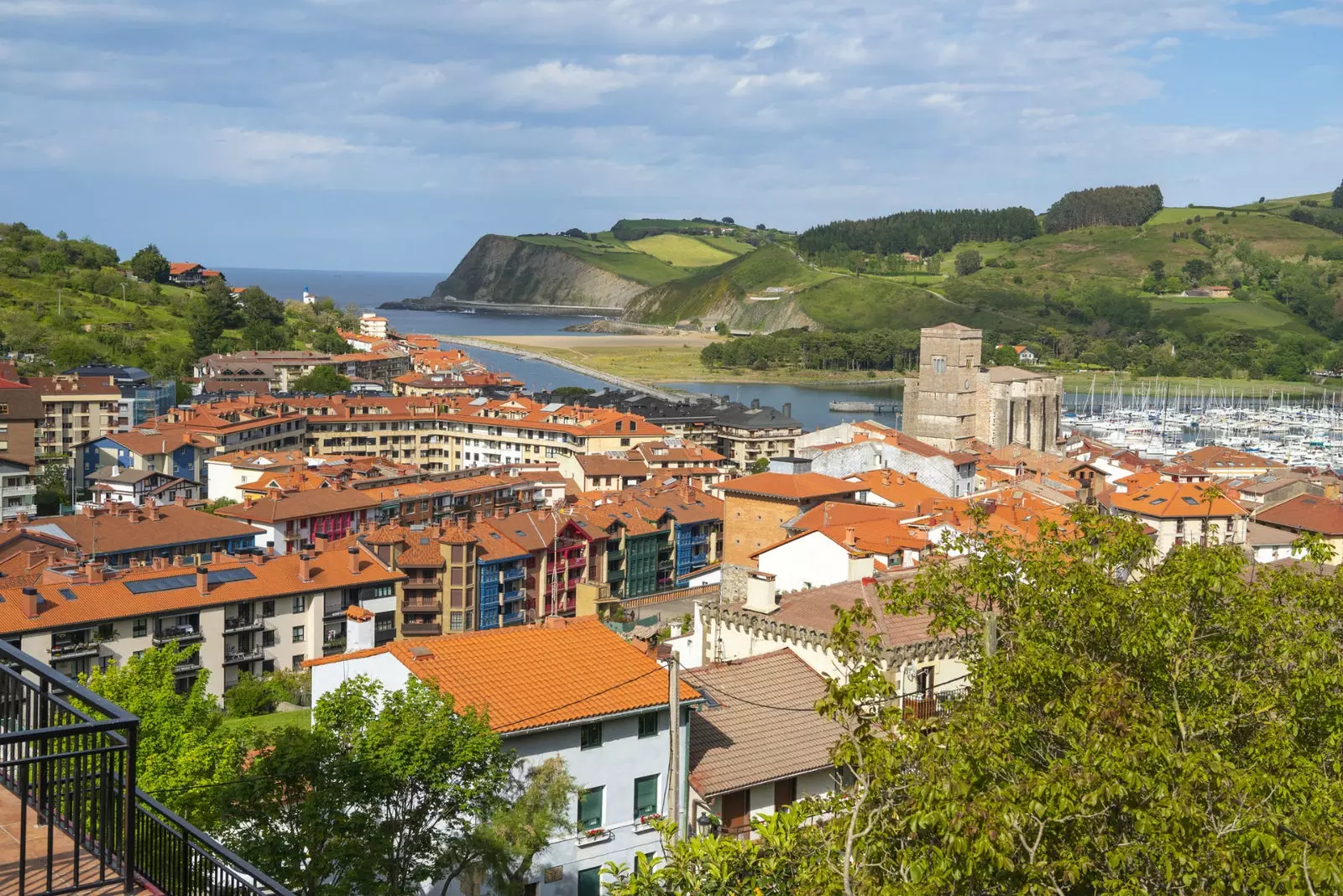
From the sky, the historic center of Zumaia.
IN THE HISTORICAL TOWN, THE HEART OF ZUMAIA
You have already seen the main claim of this seafaring town , but you still have to see and taste the best. From the Hermitage of Sant Telmo we headed to historic center of Zumaia where is the St. Peter's Church , which was probably built at the same time as the fishing village, back in 1347.
Next to it we find a small square and several terraces where you can have a small snack. A few meters away we find the Zumaia Palace , in the heart of the town, which belonged to the Ganboa family , one of the most powerful in the town.
And also the House-Palace of Olazabal , whose façade built in sandstone masonry is worth a visit. It is in this area where it is convenient to get lost in its alleys and see the life that is breathed.
During the weekend it is filled with young people who do not forgive their moment of pintxos and beers. We will give you directions later.
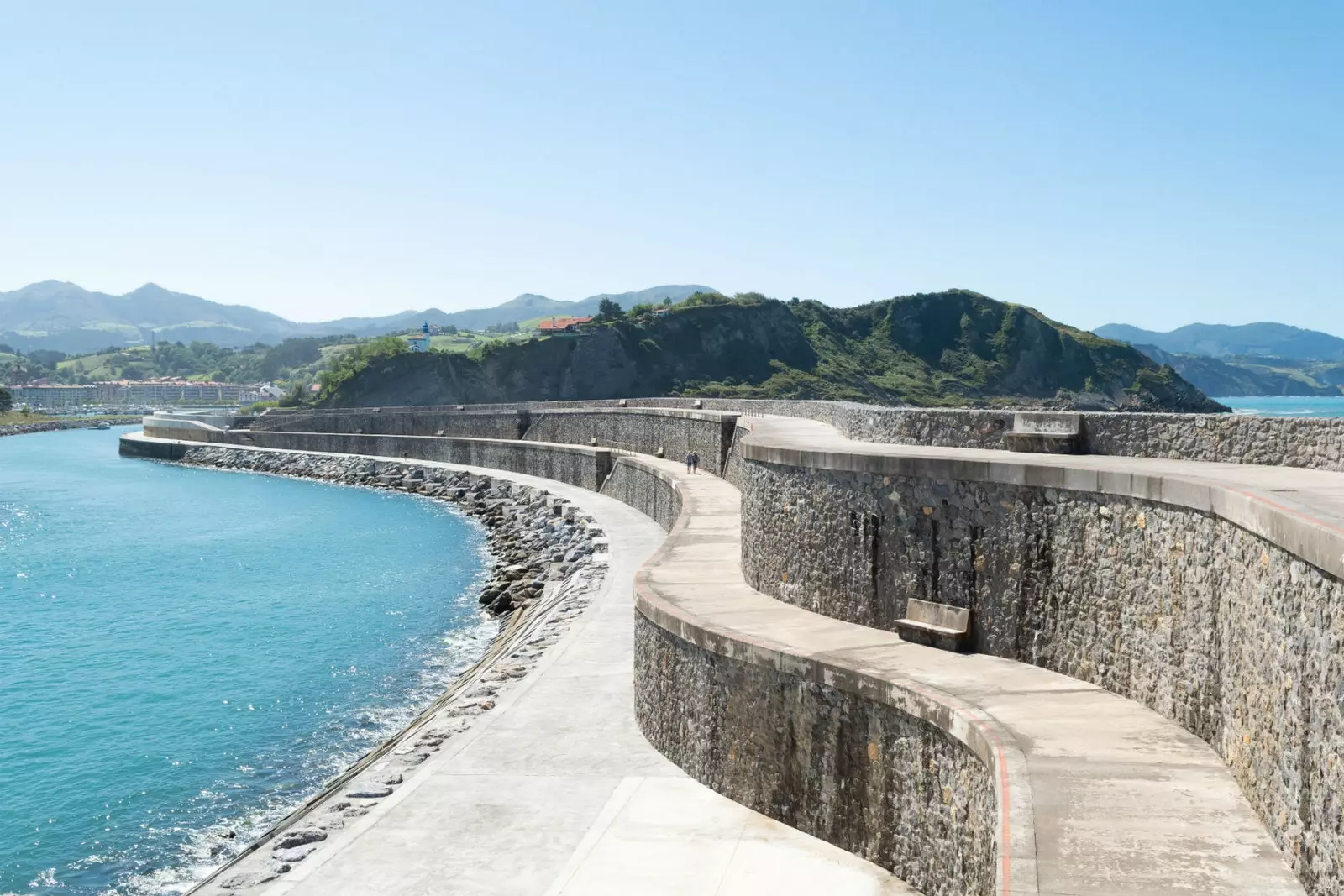
A walk through its port.
ZUMAIA FROM PORT TO PORT
Zumaia, since ancient times, has lived from fishing and trade with Europe, which is why you will be surprised by the magnitude of its port activity.
head towards the Zumaia Lighthouse , along Avenida de Julio Beobide you can get an idea of how beautiful this town is. On one side the green mountains, to the other the sea Y the mouth of the river Urola.
The end of this walk ends at two beaches: the small Inpernupe Rocky Beach, to the left, and the Santiago beach , on the right. The latter has a large sandy area and is protected because it has a special ecosystem with more than 50 different species of plants.
If you want to learn more about the geology of Zumaia, you should visit the ** Algorri Interpretation Center **. It is located in a modernist building built in 1912, where activities, guided tours, boat trips Y trekking along the cliffs.
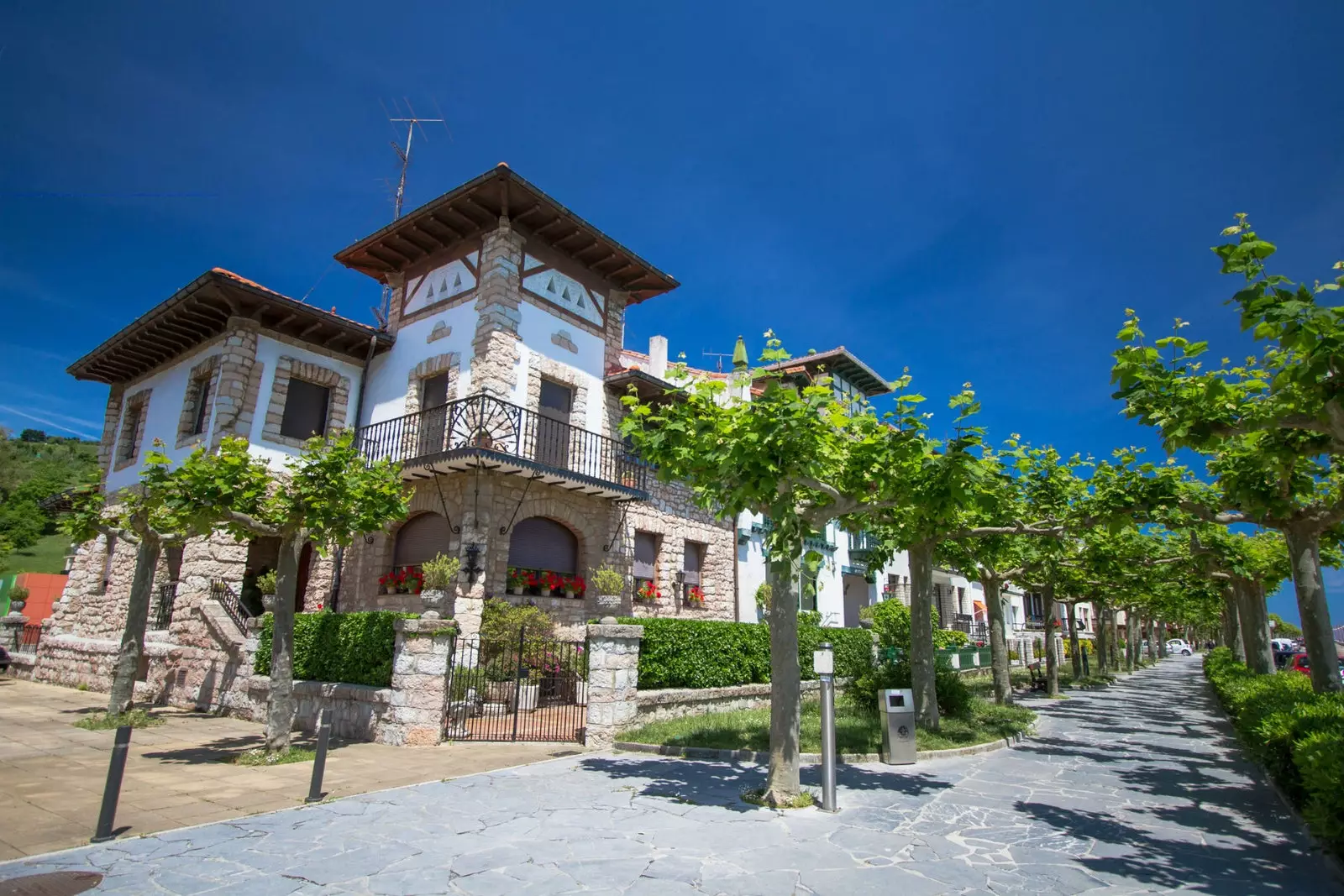
Houses along Avenida Julio Beobide.
In a relaxed way we continue the walk through the Julio Beobide Avenue , which honors the sculptor from zumai Specialized in costumbrista realism and religious sculpture . Here we meet the Kresala house , where Beobide set up his workshop. Unfortunately we cannot enter.
If we continue, leaving the sea behind, we will find several emblematic buildings: **the House of Culture or Alondegia Kultur Etxea ** which is located in the old Foronda Palace, the summer residence of the Marquis of Foronda built in the 20th century. It currently serves as a library and multipurpose room.
Near the mansion is the Brotherhood of Seafarers of San Telmo . On the other side of the river and next to the marshes (you have to cross two bridges to get there) we find Z Cultural Space or Z Kultur Gunea .
It is an old hostel for pilgrims (the Camino de Santiago also passes through here) that was owned by the painter of the Generation of '98, Ignacio Zuloaga . In the space you can learn much more about his work and others like those of Picasso, Miró or Tapies , among others.
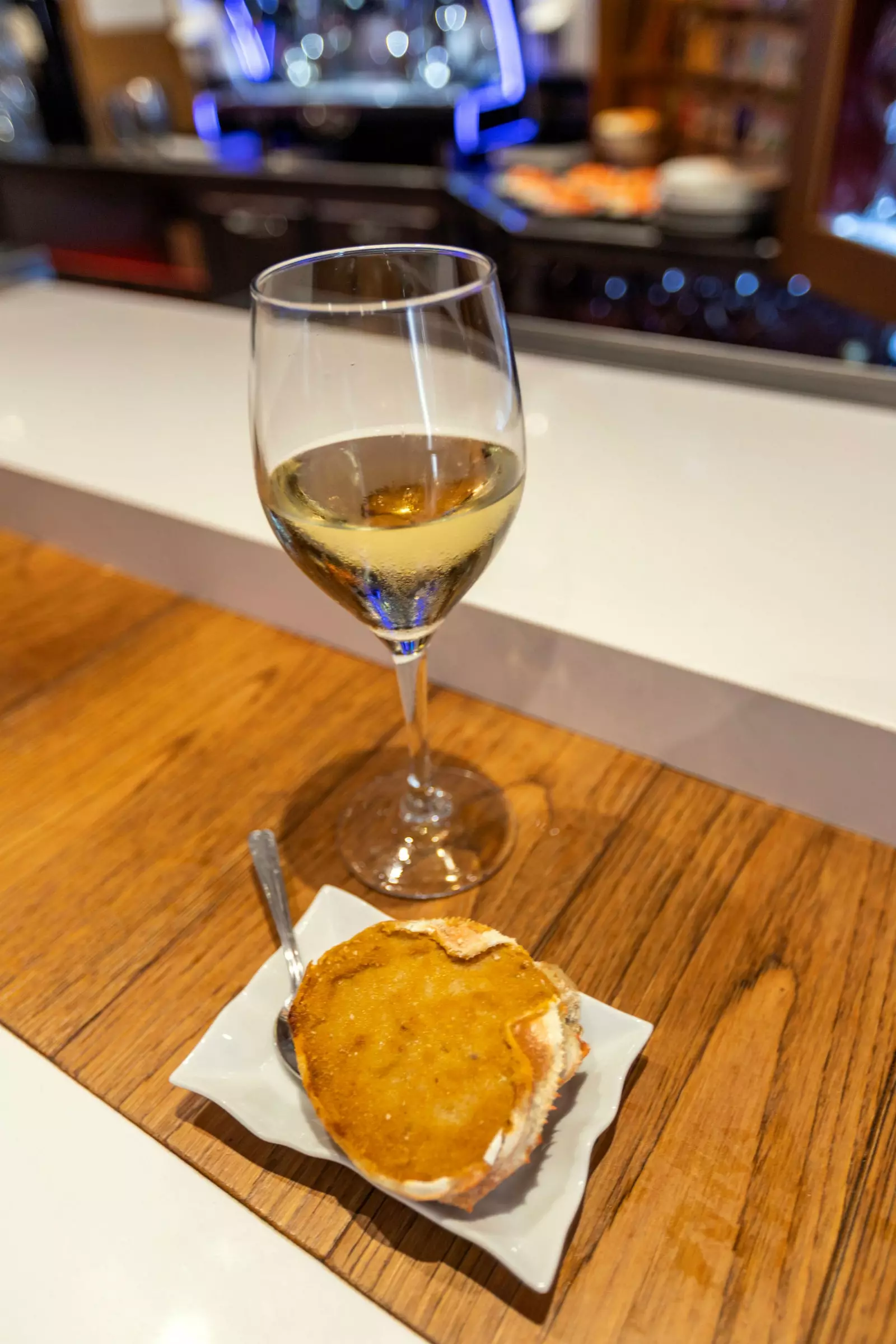
The spider crab of Zumaia.
WHERE TO EAT
The reason for this trip was purely gastronomic, we are not going to deny it. In Zumaia, as in many other Basque (and northern) towns, it is best to go from bar to bar in search of the perfect pintxo and wine or beer.
Here are some of the best. Enjoy them as much as I do!
Idoia Bar-Restaurant (_Julio Beobide Ibilbidea, 2) _
Right in front of the Urola river and the port of Zumaia It is the best place to start for the round of pintxos . It has it all: good atmosphere (you can even cross the street and sit on a wall facing the sea) and a good assortment of pintxos and wines . If you have come to improvise try the spider crab.
There are always people, so be patient because it's worth it.
Mama Tavern (Ortega and Gasset Kalea, 3)
There is something that does not fail: go where you see people . Here you will always find it. In this tavern you must try the cod pintxo , which is why you are in the Basque Country.
Goika Bodegoia (Erribera Kalea, 9)
You will eat, not only delicious pintxos, but also traditional dishes to sit at the table. Don't miss their seafood product: the ventresca or the squid , for instance.
Bedua Grill (Bedua Disseminated Barreiatua, 1)
Do not leave Zumaia without passing through here. It is true that it is on the outskirts of the town and that it is to pay homage , but you will never forget their dishes.
Although it is a steakhouse, you must try their seafood. His specialty is (as in this area of Guipúzcoa) grilled turbot , also cod or cocochas.
Essential are their artichokes with clams and its tortilla . You will not see a single table that does not ask for it, because it is the star dish. How can you make such a work of art with a couple of eggs!
Make room for dessert, and if you can, ask for a torrija. It's all homemade.
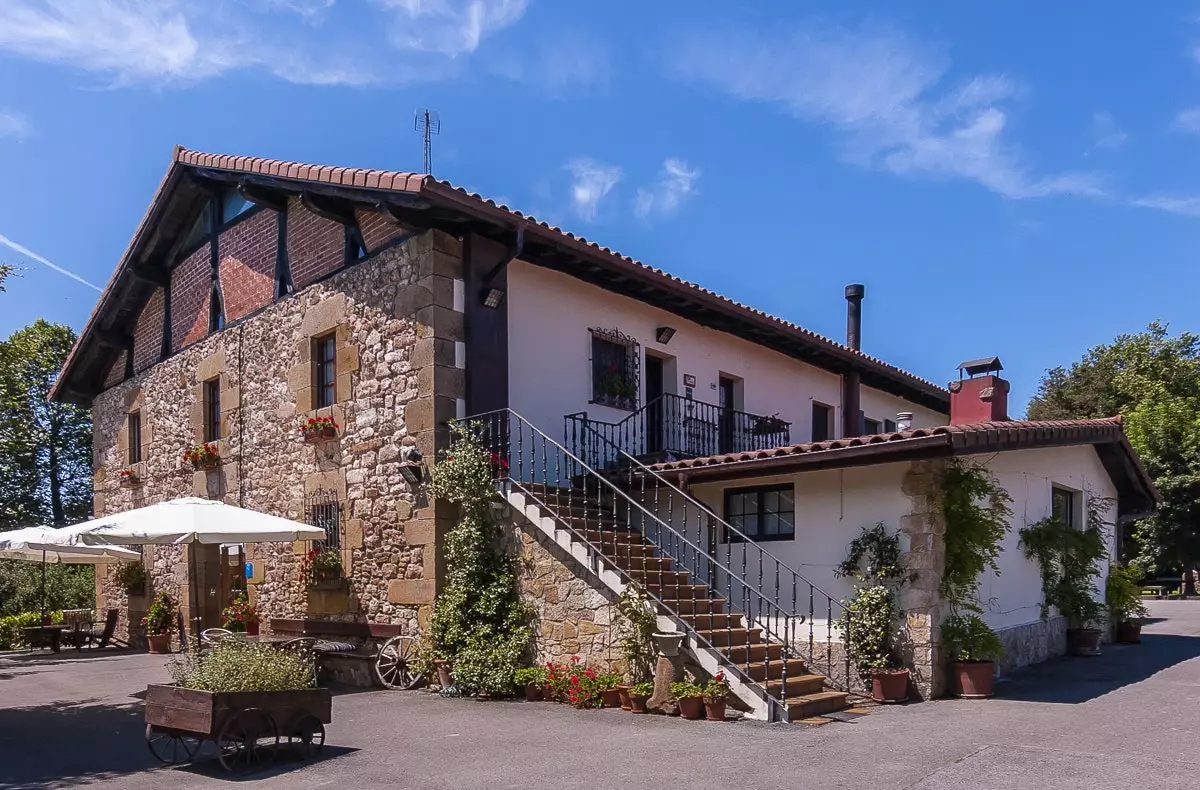
The Jesuskoa rural hotel dates back to the 18th century.
WHERE TO SLEEP
The dessert of this trip through Zumaia is the estancia . The essence of the Basque Country is to be able to sleep in a rural house, in an establishment with years of life and a long tradition. And that place is the ** rural hotel Jesuskoa **, located in the neighborhood of Oikina, 3 km from Zumaia, and built by the Jesuits in a stone building from the 18th century , which also served as a warehouse to build the Basilica of Loyola.
The “Oliden” family has been in the house for eight generations , initially the sustenance was livestock and farming; Currently they go out of their way for clients so that they have a most pleasant stay.
Jesuskoa is divided into several spaces, the rooms for couples and the small houses or apartments for families or couples traveling with dogs . Yes, this is the best, you can bring your pet, as long as they get along with other animals.
The rural house of Jesuskoa he has his own farm , and in the morning, you can go with your children to collect the breakfast eggs.
In our case we chose the ** Pagoa apartment ** : 54 m2 with a dining room and kitchen, fully equipped, a bedroom with two double beds and a bathroom included, which also has a fireplace to dream of in the warmth of the fire. It also has a living room with sofas and good views of nature that surrounds the house.
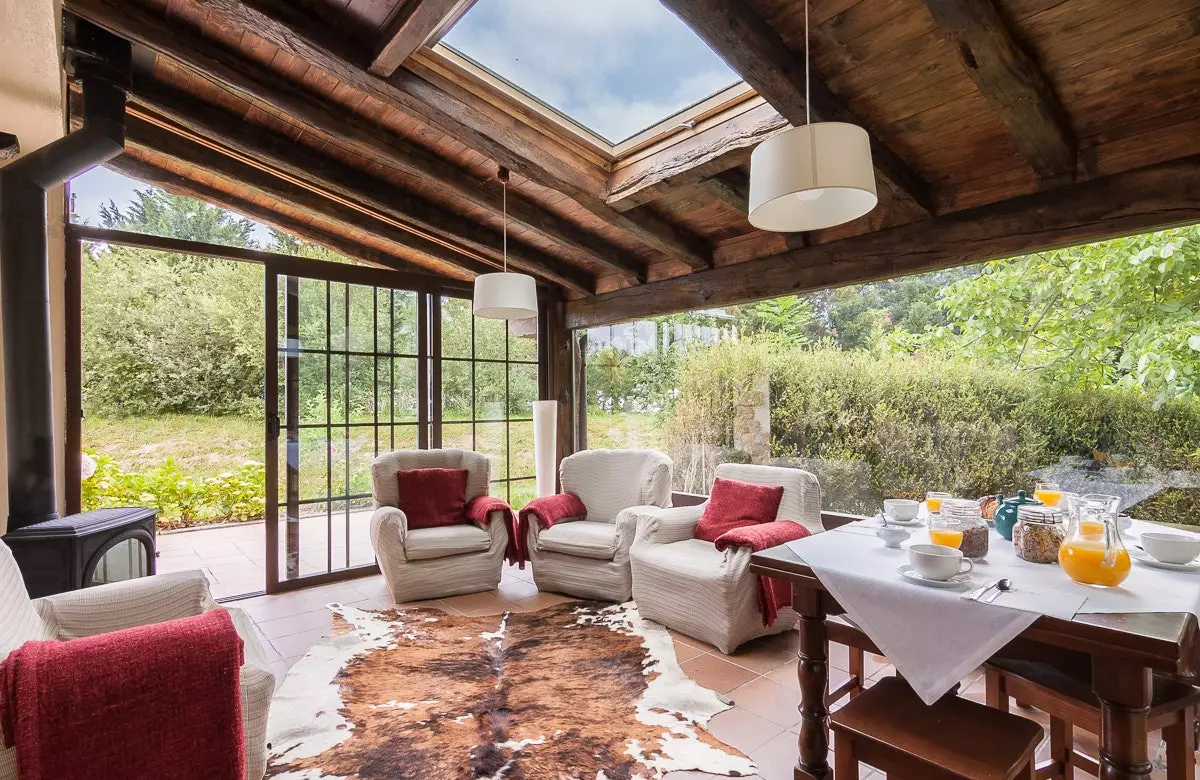
Welcome to rest in Jesuskoa.
The breakfasts and dinners , they are only for guests, but you cannot miss them. In the morning they will welcome you with their butter cookies and natural orange juice . You can choose the breakfast yourself, it is generous and varied.
They prepare fear potato tortillas with zucchini and the cakes. Please try the almond cake.
What they have their own garden , they guarantee that the products are healthy and local. And as a curiosity you can taste honey directly from a honeycomb . They are members of the club “bee friends” , so they give up part of their land so that the bees can go to pollinate. Every 15 days they are supplied with a honeycomb for customers to enjoy at breakfast. A luxury!
In the evening They offer dinner. In fact, it is Ramón, the director of Jesuskoa, who is in charge of the letter that changes depending on the season of the year . We were lucky enough to try a delicious pumpkin cream, a fish soup, a crispy mushroom and, best of all, fried eggs with potatoes.
There's still more. Jesuskoa is open to the future, That's why they have a charging system for electric cars . The first in the whole area. In addition, they are sustainable and respectful of the environment. : collect river water in a biological pond for the irrigation of your orchard and gardens.
If you have come to rest this will be your place. You can book one of their experiences here or also through Ruralka , the website specializing in charming getaways for Spain.
